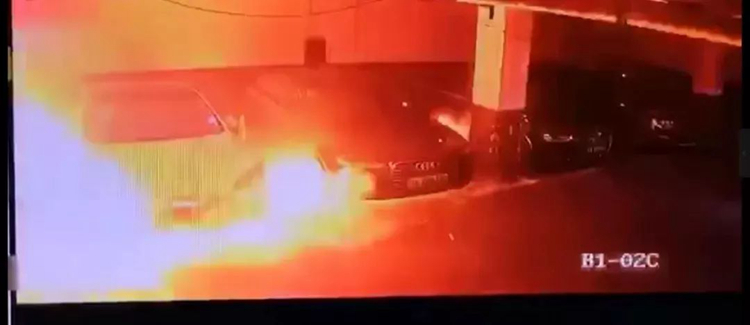On the night of April 21, 2019 at 11:38 pm, a Tesla Model S caught fire in an underground parking lot in Xuhui District, Shanghai. 58 days have passed and we are still waiting for Tesla’s investigation report on the incident.
However, three days after the accident occurred on April 24, Tesla’s official Weibo account announced that “the relevant incident is being investigated under the guidance of authoritative departments, and no preliminary judgment or conclusion has been formed. We will actively cooperate with the investigation work and announce the investigation results in a timely manner.”
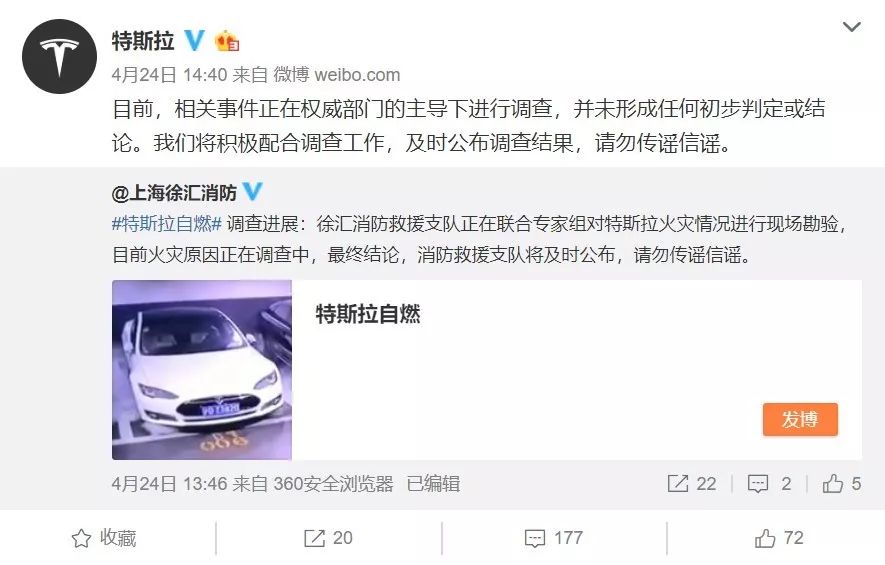
This statement is consistent with the explanation given by Zhu Jiang, Vice President of User Development of NIO, regarding the smoke incident of ES8 in Jiading District, Shanghai on May 16, 2019, “the accident was led by the national regulatory department and all parties participated in the investigation. The preliminary conclusion has been reached and we will communicate with everyone and publish follow-up measures once it is confirmed by the regulatory department.”
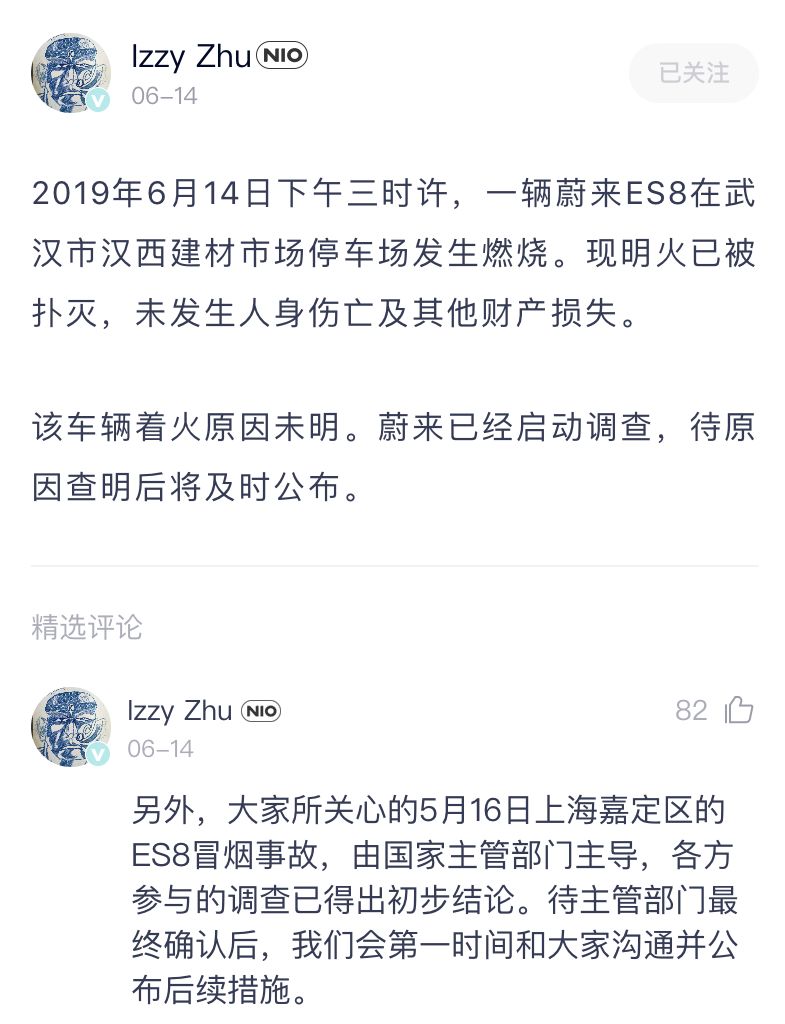
Based on the two statements, it can be seen that regardless of the brand, as long as it involves new energy vehicles and spontaneous combustion, the regulatory department will immediately intervene and lead the investigation. The corresponding investigation report needs to be confirmed by the regulatory department and the release time will be relatively delayed.
However, Tesla has apparently preliminarily determined the cause of a series of combustion incidents since 2018 and has begun follow-up measures, all of which have been carried out without informing the users.
The Causes of Tesla Spontaneous Combustion
On April 21, May 3, and May 13, within less than a month, three Model S spontaneous combustion incidents occurred in many places around the world. We decided to sort out the records of spontaneous combustion incidents since Tesla’s delivery date.
According to Wikipedia, up to now, there have been a total of 16 incidents of Tesla Model S/X catching fire. According to the causes of ignition, I divided them into non-external spontaneous combustion, insufficient design, collisions and others.
On October 1, 2013, the Model S first caught fire due to the chassis being scratched by a sharp metal part.On March 28, 2014, Tesla announced that all models produced since March 6, including those already delivered, were equipped with a triple underbody protection consisting of a hollow aluminum bar, a titanium alloy shield, and a oblique solid stamping aluminum plate. After being evaluated by the National Highway Traffic Safety Administration (NHTSA), there is no evidence that Tesla vehicles have a design defect, and the new underbody can reduce the probability of impact on the bottom of the vehicle and the risk of resulting fires.
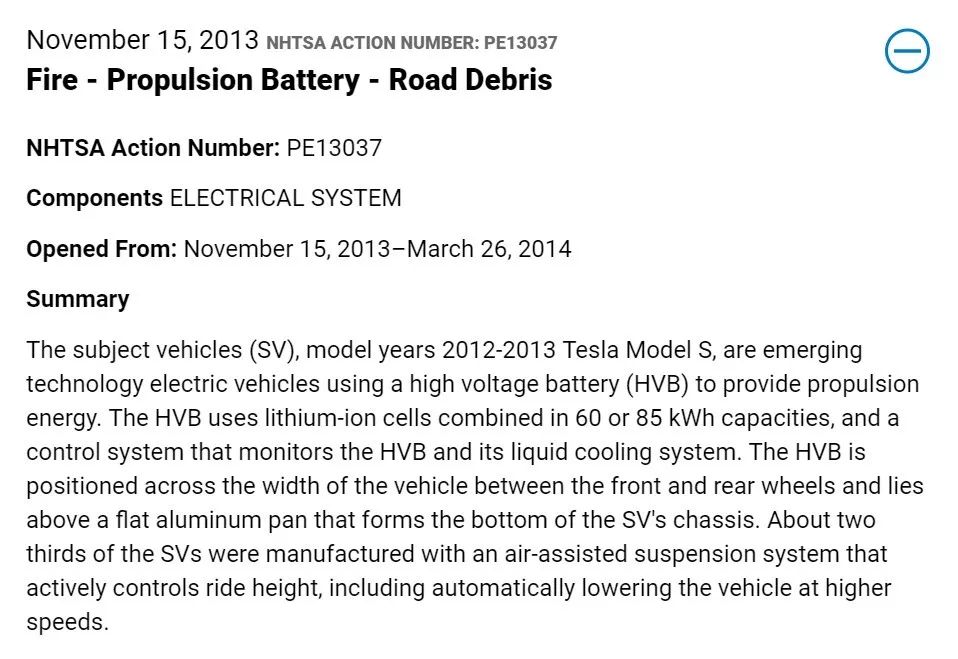
We believe that this is the earliest remedy taken by Tesla for the imperfect design of their Model S after accidents occurred.
Apart from design issues, another type of problem is fires caused by collisions and other reasons. For example, on October 24, 2013, a Model S in Mexico caught fire after a speeding collision. When the lithium-ion battery is compressed due to a collision, the cooling liquid can leak and cause a short circuit, leading to combustion. However, the risk of combustion also exists in fuel-powered cars due to aging of fuel lines and collisions with the gas tank.
In other words, this is a common problem among all automotive power sources, regardless of whether it is driven by fossil fuels or secondary energy sources such as electricity or hydrogen. The only direction for improvement is to continuously improve the overall safety performance and torsional rigidity of the vehicle structure. In this aspect, Tesla has made some efforts.
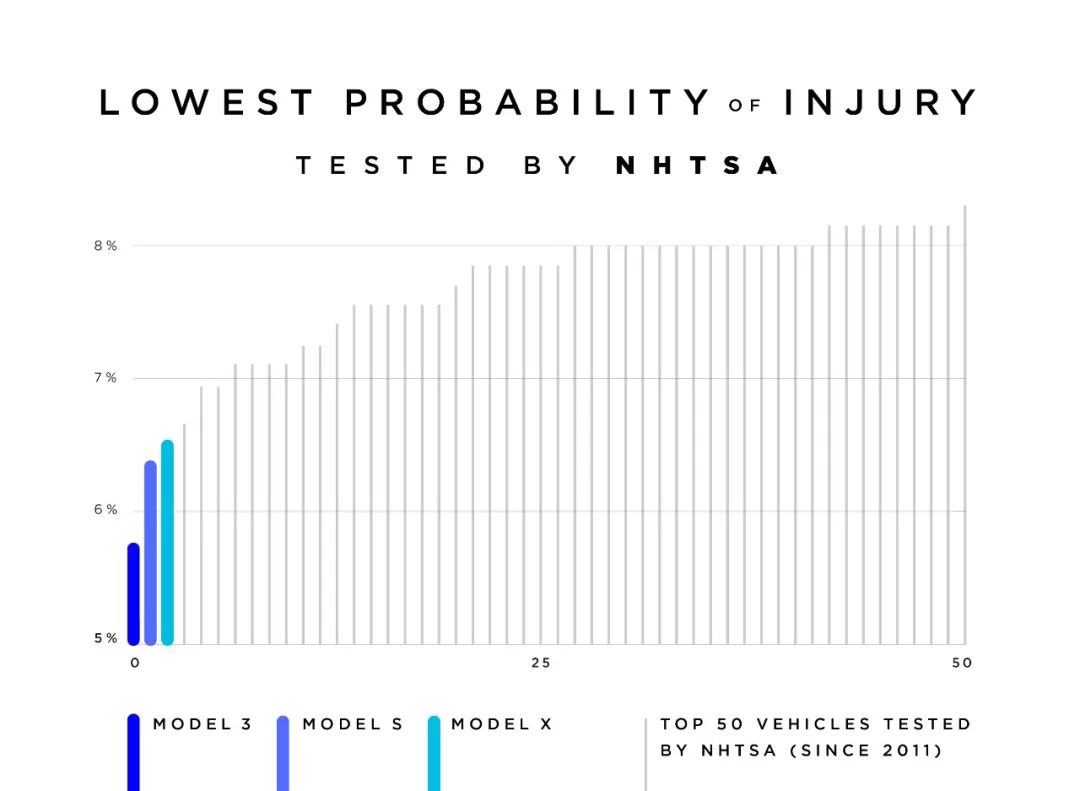
The last type of problem is non-external spontaneous combustion caused completely by the battery through repeated charging and discharging chemical reactions, which is known as the “original sin” of pure electric vehicles.
After analyzing 16 fire incidents, we found that the first non-external spontaneous combustion caused by battery aging occurred in 2018. Since 2018, Tesla has experienced 9 fires, of which 7 were caused by spontaneous combustion of the battery, accounting for 77.8%. At the same time, the number of fires since 2018 accounted for 56% of the cumulative spontaneous combustion of Model S/X since delivery.
We can conclude that since 2018, Tesla’s thermal management system and part of the Model S/X battery have no longer matched. The long-term overcharging and over-discharging have led to different capabilities of individual battery cells. At this time, the thermal management system must make more conservative adjustments to reduce the risk of overcharging or short circuits causing thermal runaway.
A Victim of the Whole Vehicle OTA Mechanism?On June 3, 2019, Dutchmeeuw, the owner of a Model S 85D, posted on the Tesla Motors Club about sudden range degradation. The owner claimed that on May 12, the vehicle’s full charge range was 399km, but dropped suddenly to 379km on June 1, which amounted to a 5% range loss in two weeks.
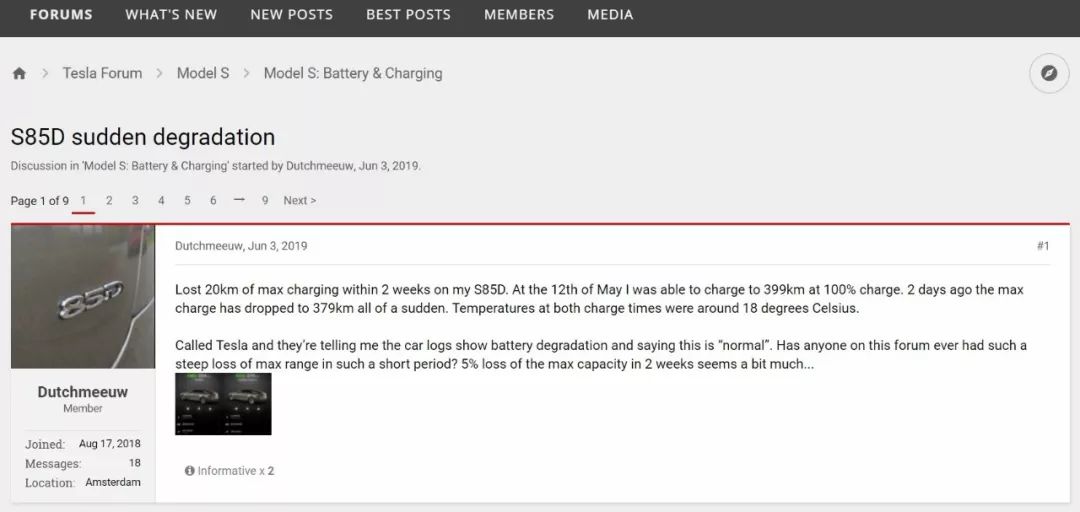
The post quickly sparked discussion, with several Model S owners reporting range reductions ranging from 5% to 15% in the latest version of Model S. Changes were also made to the charging time and thermal management system. The specific adjustments were summarized by “Zhixing Auto” as follows:
- Limiting the State of Charge (SoC) to decrease the maximum cell voltage and reduce range
- Limiting charging power
- Increasing the unusable battery capacity (which is hidden in the Battery Management System) from 4 kWh to 5 kWh
- Frequent start of the thermal management system, even when the vehicle is stationary
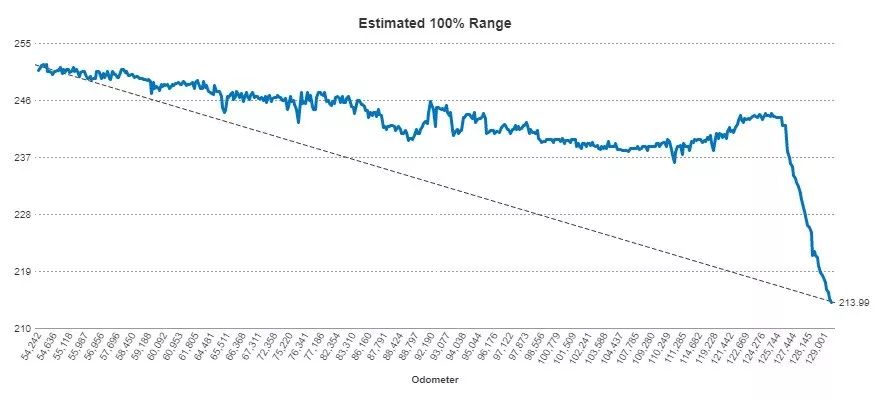
Significant range degradation
According to the owner’s statistics, the range degradation first appeared after the widespread distribution of version 2019.16.X on May 16, mainly on versions 16.X and 20.X. The following is the update log for Tesla’s 16.X and 20.X versions:
- 16.X: improved driving visualization, Sentry Mode, Software update preference (optional advanced), QQ Music (China only)
- 20.X: improved Dog Mode, adaptation to CCS 200 kW third-party fast charging (except in China), conditional speed limit, and automatic assisted driving navigation (China only)
It can be seen that Tesla did not mention significant updates to the BMS strategy, which directly affects charging and range. However, Tesla issued a statement on May 15:
 > As we continue to investigate the root causes of the spontaneous combustion, we are cautiously modifying the charging and thermal management settings of Model S/X. Today, it will be pushed via OTA to further protect the battery and extend its life.
> As we continue to investigate the root causes of the spontaneous combustion, we are cautiously modifying the charging and thermal management settings of Model S/X. Today, it will be pushed via OTA to further protect the battery and extend its life.
Two days before the announcement, a Model S 85D spontaneously caught fire in Hong Kong.
Therefore, with the significant increase in the probability of non-external spontaneous combustion since 2018, Tesla has determined the cause of spontaneous combustion and officially pushed new mechanisms to avoid the risk of spontaneous combustion in the 16.X version (partially in 20.X) update on May 16. However, Tesla did not disclose any of this, including the decline in charging and endurance experiences, which are being promoted without the user’s knowledge.
Tesla directly pushed an update to adjust the core performance indicators of the vehicle, which lowered user experience and caused dissatisfaction among users. A Tesla owner expressed dissatisfaction on Weibo.
When you think about it, I have no control on how long my car can run. Tesla dictates it. Unless I don’t upgrade.
On the Tesla forum, some users joked about launching a collective lawsuit against Tesla. What we want to ask is, is Tesla compliant with this?
In the “New Car Limited Warranty” (updated on February 1, 2019, applicable to Model S/X/3) on the Tesla official website, we found that Tesla has very strict regulations regarding battery warranties.
Tesla has the right to determine the method of measuring battery capacity, decide whether to repair, replace, or provide remanufactured parts, and decide the status of the parts used for replacement or remanufactured parts.
After restricting the available capacity of the battery in 16.X, leading to reduced endurance, Tesla replied to the user that it was a normal ageing phenomenon.
The battery cells are experiencing some wear, which is normal and expected as the vehicle ages.In “New Car Limited Quality Warranty,” Tesla has the following statement: “Battery energy or power loss due to the passage of time or battery usage is not considered a battery malfunction or quality issue.”
Therefore, we can make a preliminary judgment: Tesla has considered the chemical changes of electrochemical materials after repeated charging and discharging, and has reserved operational space through the vehicle OTA mechanism. For some Tesla owners, although there is no problem of poor quality battery pack leading to rapid range reduction, it is expected that there will be a rapid decline in range and charging and discharging performance five years after purchasing the car (or reaching the corresponding mileage).
How to view Tesla’s OTA power reduction?
According to incomplete statistics from Tesla forums, the new version of charging and thermal management strategies appears primarily on Model S 85D vehicles produced in 2014-2015, as well as a small number of 70 kWh and 90 kWh models. This statistics is worth pondering. This means that the earliest Model S, i.e., the Model S 85 delivered from June 2012 to the end of 2013, does not have the risk of thermal runaway and spontaneous combustion.
Obviously, Tesla has identified the models with risks and carried out targeted pushes. (Considering that Audi e-tron and Jaguar I-PACE have launched significant recalls (all due to software update issues) shortly after delivery, Tesla’s advantage in whole vehicle OTA capability in enterprise operation is once again highlighted.)
However, here comes a problem: this spontaneous combustion incident is apparently not a routine battery aging issue. So, what was the problem with the battery pack produced in 2014-2015?
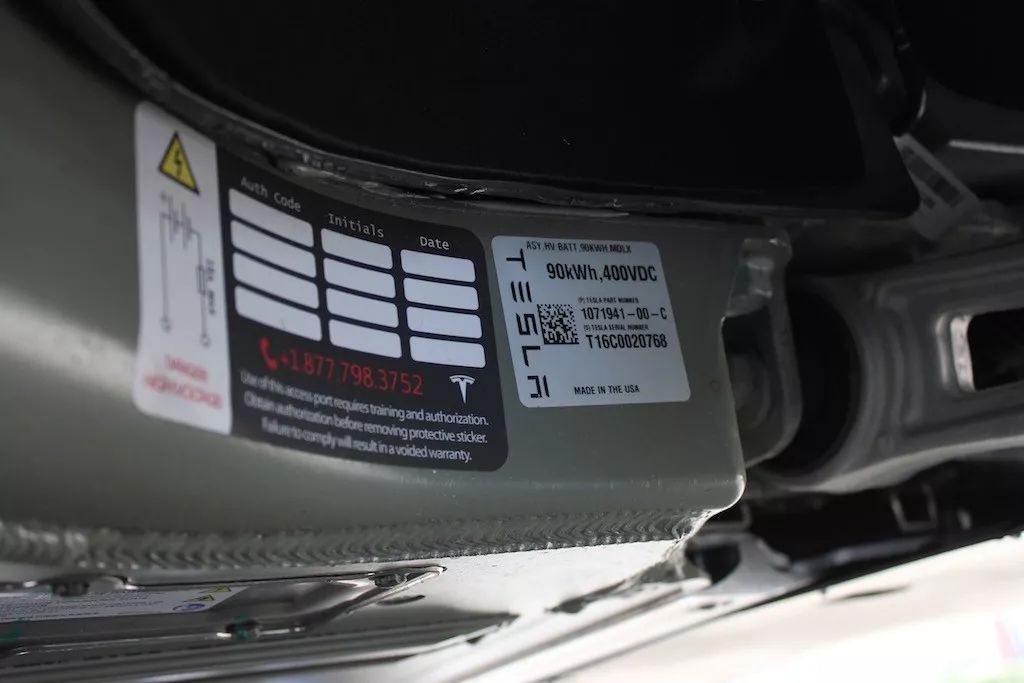
Here we need to explain that on the right front side of Tesla’s battery pack, there is a sticker with information about the battery pack. As shown in the figure, Tesla named battery pack versions as A, B, C, D, E. The battery pack version for the first-generation Model S is A, while the Model S with a range of 660 km under WLTP standard on April 24 has an updated battery pack version E, although the battery pack size is still 100 kWh.
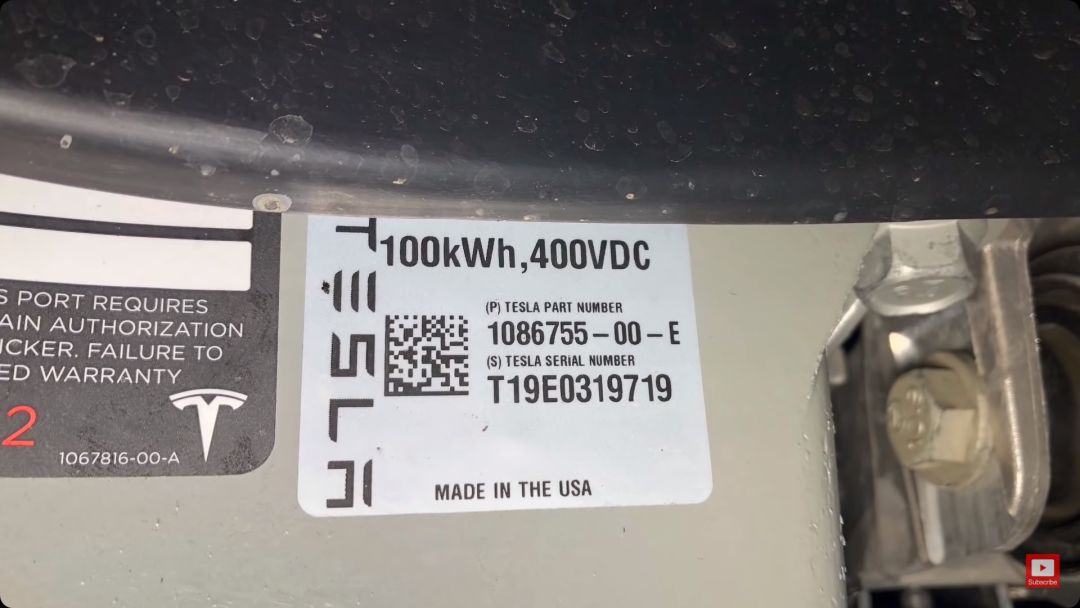 From the perspective of battery cells, the earliest Roadster used Panasonic’s NCR18650A with a capacity of 3.1 Ah, while Model S 85 has been replaced with NCR18650B with a capacity of 3.35 Ah. In terms of battery materials, the graphite anode of 18650 has been gradually infiltrated with silicon elements to improve energy density.
From the perspective of battery cells, the earliest Roadster used Panasonic’s NCR18650A with a capacity of 3.1 Ah, while Model S 85 has been replaced with NCR18650B with a capacity of 3.35 Ah. In terms of battery materials, the graphite anode of 18650 has been gradually infiltrated with silicon elements to improve energy density.
From the perspective of high-voltage systems, Model S has undergone three high-voltage system upgrades to date, and from the perspective of thermal management systems, it has undergone two major upgrades.
What I mean is that when Tesla is determined to deploy cutting-edge technology to mass-produced models and treats “Move Fast and Break Things” as a god, it is inevitable that some technologies will be exposed ahead of time due to insufficient testing.
Taking the 85 kWh battery pack models from 2014 to 2015 as an example, was it a problem with the chemical formulation of the battery cells themselves or an unreasonable design of the thermal management system that caused overcharging and over-discharging? We don’t know.
While commercializing cutting-edge technologies, Tesla has always been striving for a balance between safety, economy, and performance. However, these three are not always compatible.
Why Tesla?
This is a good question, but not difficult to answer.
BMW, Nissan, and BYD were all carmakers that embarked on pure electric vehicles around the same time as Tesla. Why did only Tesla encounter such problems (although it was resolved through vehicle OTA updates)?
In addition to the overzealousness of commercializing cutting-edge technologies, Tesla’s cars have three features: high performance, long range, and fast charging. These three features require the battery to have three qualities: high discharge rate, compact and efficient thermal management system, and high charging rate. After years of charging and discharging and driving, it is difficult to perfectly match the BMS and the chemical characteristics of the cells.
Considering Tesla’s cylindrical battery cell route, it can be said that Tesla’s three electrical teams have been walking a tightrope in recent years. Whereas BMW, Nissan, and BYD did not launch models that met above criteria in the past five years, so they did not face such problems.
Looking at the world today, which enterprise’s models meet the above criteria? Traditional luxury brands such as BBA, Porsche, and Jaguar Land Rover, China’s BYD and NIO.
Industry insider Zhu has expressed similar concerns: Today, China’s carmakers have surpassed their German, French, Japanese and Korean counterparts in the commercialization of high specific energy density batteries, high performance, and long range, second only to Tesla. The fire incidents of Tesla rang an alarm for Chinese companies:
- Have we done enough redundancy in safety design of our vehicles?
- How will our BMS perform under extreme working conditions and long-term overcharging and over-discharging tests?* Have we established a whole vehicle OTA team that can quickly respond to potential large-scale software risks?
The global electrification technology is spiraling forward. Tesla’s 2170 battery has significantly improved in cycle life and charge/discharge rate. By 2025, solid-state batteries will bring the industry’s thermal runaway risk to a new level.
But for now, and the foreseeable future, regulators, automakers, and media should focus closely on battery thermal runaway issues. This is not just a challenge for Tesla, but for all of us.
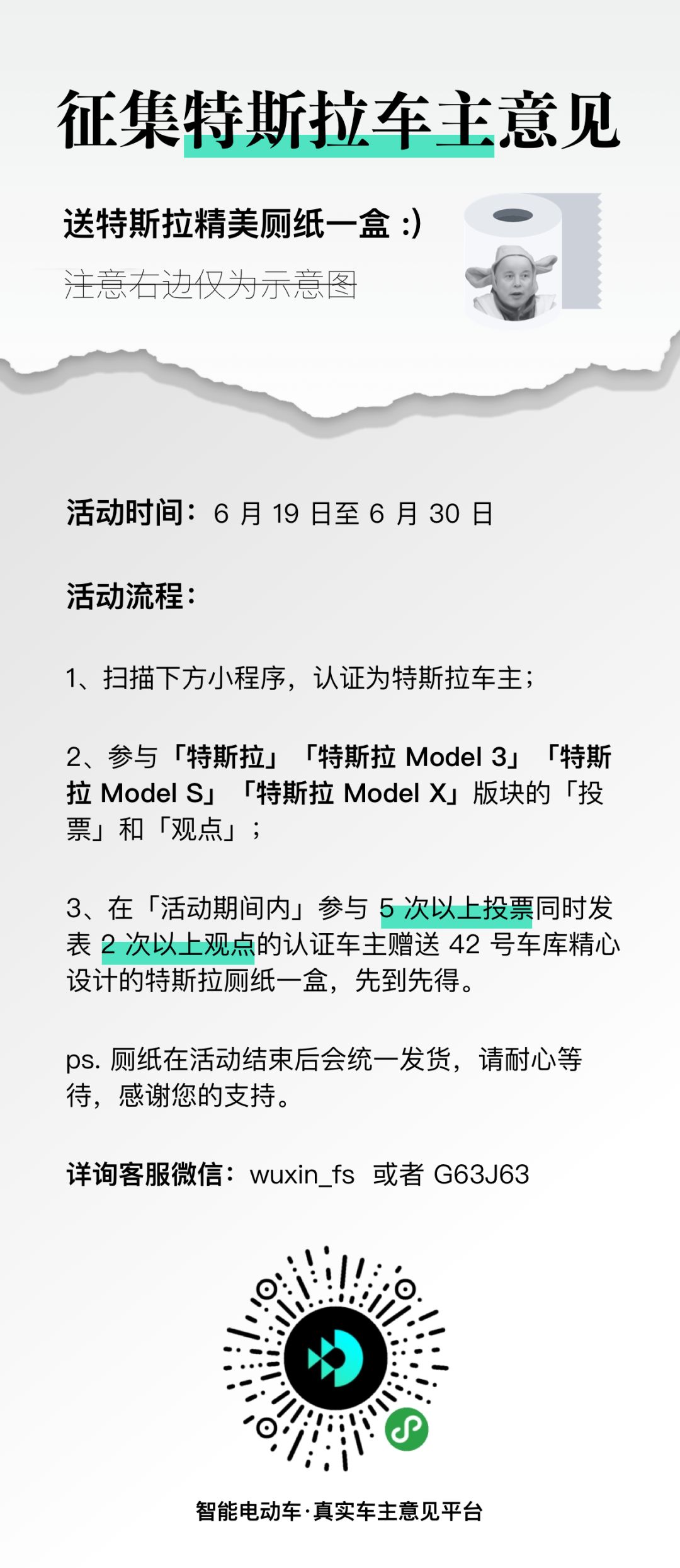


-
Tesla Will Return

This article is a translation by ChatGPT of a Chinese report from 42HOW. If you have any questions about it, please email bd@42how.com.
